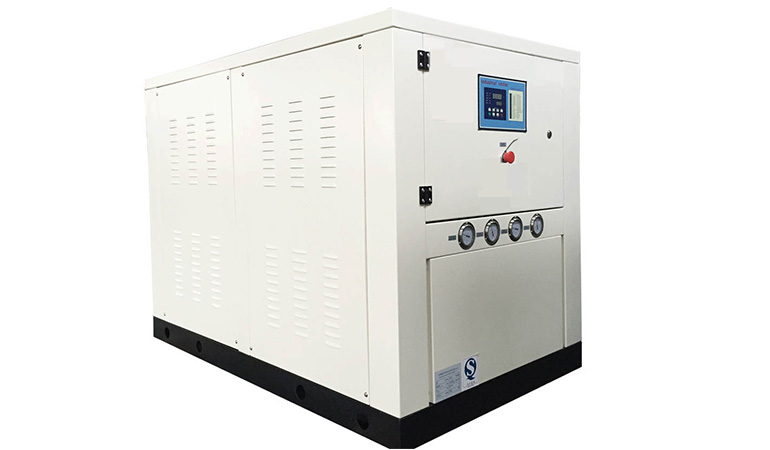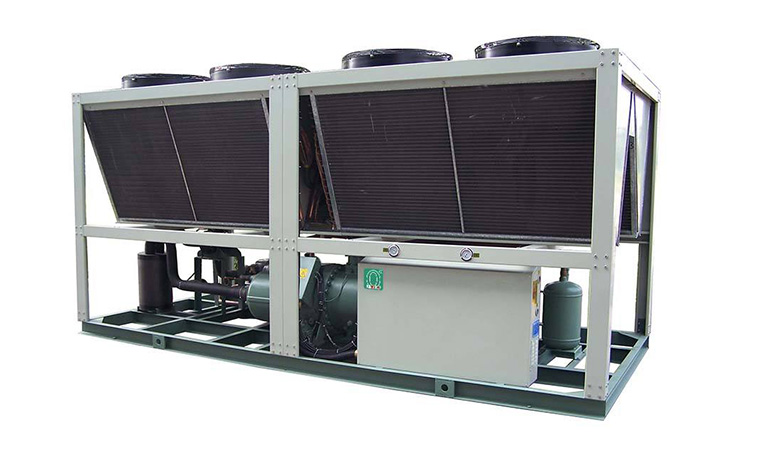Industrial processes generate a lot of heat, which must be dissipated to avoid damage to sensitive equipment and to protect finished products. Proven methods of monitoring and regulating temperatures at optimal levels involve the use of a cooling system, which can be either water-cooled or air-cooled. This article will focus on the differences between water-cooled chillers and air-cooled chiller systems.
Air-cooled chillers vs. water-cooled chillers
While both air-cooled chillers and water-cooled chillers function to remove unwanted heat from the manufacturing process, they differ in different ways. Deciding which chiller type is best for your industrial process depends on several factors, including
Chiller condenser mechanism
Cost differences
Environmental and location considerations

Air-cooled vs. water-cooled condensers
There is a distinct difference between air-cooled chillers and water-cooled chillers with condensers. Air-cooled chillers are equipped with condensers that use ambient air to lower the temperature of the refrigerant. Fans are used to force the air through the ducts containing the refrigerant, thus removing the heat from them. The cooling refrigerant used in the chillers can then be circulated through the industrial process to achieve the cooling effect.
In contrast, water-cooled chillers use the high heat capacity of water to promote refrigerant cooling. The typical coolant used in a water-cooled system is a mixture of water and glycol circulating in a sealed network of pipes. Cooling occurs as the cooled refrigerant passes through a heat exchanger that interfaces with the industrial process at hand. The heated coolant is then returned to the cooling tower or refrigeration unit to remove the heat gained in preparation for another cooling cycle.
Cost Difference
Another important factor to note when comparing air-cooled and water-cooled chillers is the cost of purchase, installation, and maintenance.
Depending on their design and operation, air-cooled chillers seem to offer a higher value at face value. First, air-cooled systems feature installation costs for ducts, fans and temperature regulation controls. In addition, these chiller systems consume more energy to power the fans to facilitate their cooling effect, which translates into higher electricity bills.

On the other hand, although water-cooled chillers are less expensive to install, they typically have higher long-term operating costs because most of these chiller types require the installation of cooling towers. In addition, considering chiller maintenance costs such as water quality testing, mandatory water treatment, and refrigeration system operating costs, the operating costs of water-cooled chillers can be significantly higher.
Environmental / Location Considerations
The planned location of the chiller is another important factor to consider when deciding on an industrial chiller. Depending on the site plan, there are advantages and disadvantages to choosing an air-cooled or water-cooled chiller.
Indoor locations
Both air-cooled and water-cooled chillers can be installed in an indoor location. However, additional space considerations must be made for air-cooled chillers. This is because air-cooled chillers need access to sufficient ambient air to operate properly.
Placing an air-cooled chiller in a poorly ventilated indoor space can hinder its cooling capacity and reduce its efficiency. In contrast, chillers can be installed in areas with minimal ventilation because their cooling towers can be placed on the exterior of the building.
